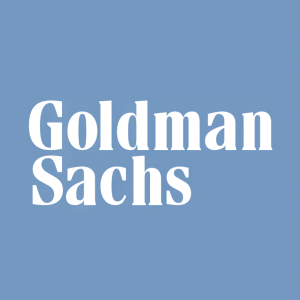[FWP] Goldman Sachs Group Inc. Free Writing Prospectus
Rhea-AI Filing Summary
Goldman Sachs (GS) is marketing an autocallable, contingent-coupon structured note linked to the worst-performing of Super Micro Computer (SMCI) and MicroStrategy (MSTR) common shares. The $1,000-denominated securities are expected to price on 18-Jul-2025, settle on 23-Jul-2025 and mature on 21-Jul-2028, unless automatically called earlier.
Income potential: Investors earn a quarterly contingent coupon of ≥ 8.9625% of face (35.85% p.a.) when the lowest underlying closes at or above 60 % of its starting price on the relevant calculation day. A “memory” feature pays any previously missed coupons once the trigger is satisfied.
Early redemption: Beginning January 2026, if the worst-performing share closes at or above its starting price on any quarterly calculation day, the notes are automatically called at par plus that quarter’s coupon (and any deferred coupons).
Principal risk: If the note is not called and, on the final calculation day, the worst-performing share is below 60 % of its starting price, investors receive $1,000 × performance factor, exposing them to full downside beyond the 40 % buffer. Investors therefore face a potential loss of more than 40 % and up to 100 % of principal.
Credit & valuation: The notes are senior unsecured obligations of GS Finance Corp. and are fully and unconditionally guaranteed by The Goldman Sachs Group, Inc. The preliminary estimated value is $925-$955 per $1,000, reflecting an initial value shortfall and embedded fees (underwriting discount up to 2.325 % plus additional selling concessions).
- Underlying selection: SMCI and MSTR are historically volatile equities, increasing the probability of coupon suspension and principal loss.
- Liquidity: No exchange listing is planned; secondary trading, if any, will be limited and may be at prices below the estimated value.
Investors seeking high income and willing to accept significant equity and credit risk may find the structure attractive; however, the combination of high volatility underlyings, sizeable fees, and downside exposure demands careful risk assessment.
Positive
- High contingent coupon of at least 35.85% per annum with quarterly memory feature offers substantial income potential.
- 40% downside buffer (threshold at 60% of start) provides conditional principal protection if breach is avoided.
- Automatic call mechanism can return capital early at par plus coupons, shortening duration if underlyings remain stable.
- Full guarantee by The Goldman Sachs Group, Inc. adds investment-grade credit support.
Negative
- Principal at risk: investors absorb full downside once the 40% buffer is breached at maturity.
- No upside participation in SMCI or MSTR appreciation beyond coupon payments.
- Estimated value discount of $925-$955 vs. $1,000 issue price highlights embedded fees and negative carry.
- Underlyings are highly volatile, increasing likelihood of coupon suspension, barrier breach and principal loss.
- Limited liquidity: no exchange listing and secondary prices may be well below intrinsic value.
- Credit exposure to Goldman Sachs as unsecured creditor.
Insights
TL;DR: High 35.85% coupon offsets 40% buffer risk; volatile SMCI/MSTR make principal loss probability meaningful.
The note’s appeal rests on an eye-catching coupon and memory feature, yet both equities exhibit beta >2 and heavy momentum-fuelled swings. That volatility erodes the likelihood of consistent trigger satisfaction and raises the chance the 60 % barrier is breached at maturity. The estimated value discount (4.5-7.5 %) plus 2.325 % underwriting cost reveals sizeable distribution economics. For income-seeking investors, the structure can perform if markets stay constructive, but risk-adjusted return pales against simpler high-yield alternatives. From Goldman’s perspective, issuance is routine and not material to earnings.
TL;DR: Coupling SMCI with MSTR concentrates downside to two hyper-volatile tech names—buffer may prove insufficient.
Both underlyings have experienced >50 % drawdowns within 12-month windows. The worst-of methodology means even one sharp sell-off suspends coupons and drives losses. Investors receive no upside participation, so expected return skews negative under high-volatility Monte Carlo scenarios. Credit risk is minimal relative to equity risk, but illiquidity compounds mark-to-market volatility. Overall effect on GS equity is negligible; impact for note buyers is highly path-dependent and speculative.










